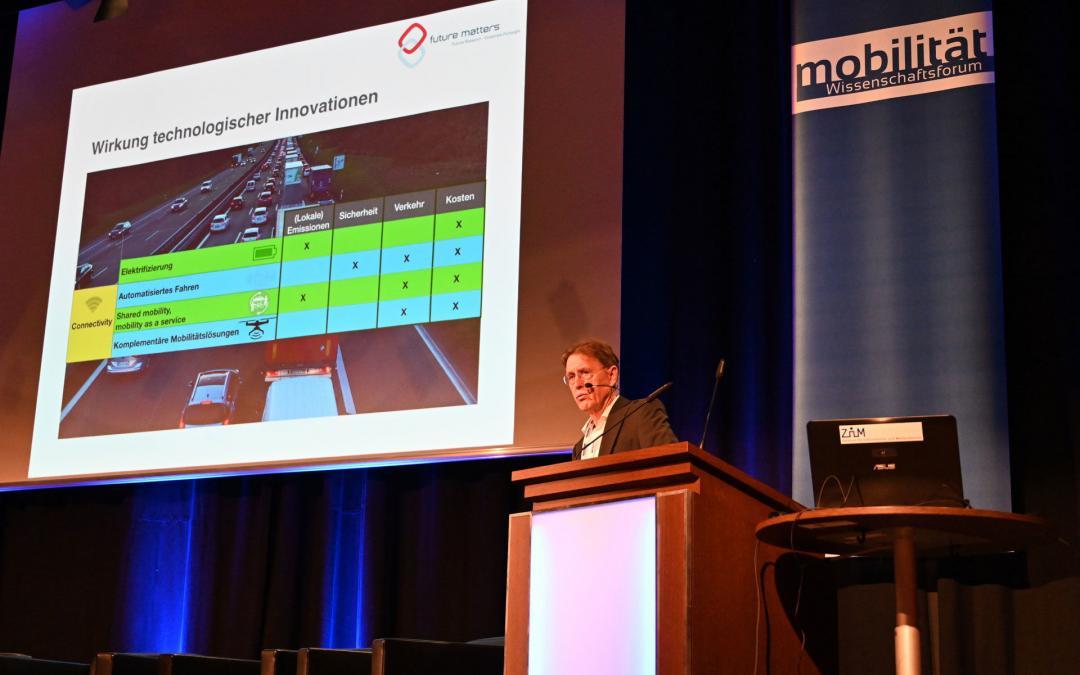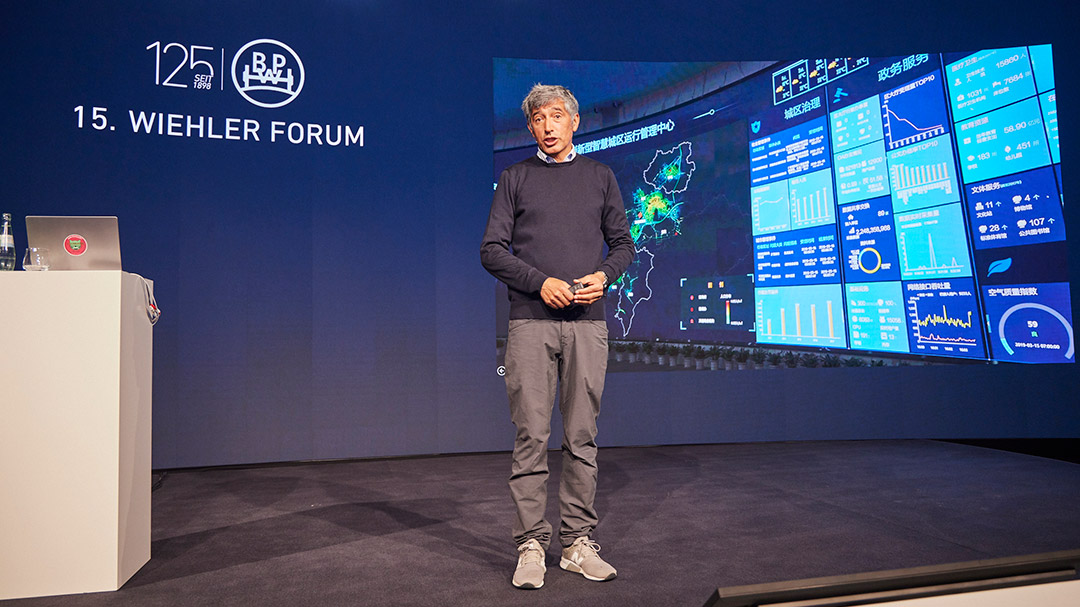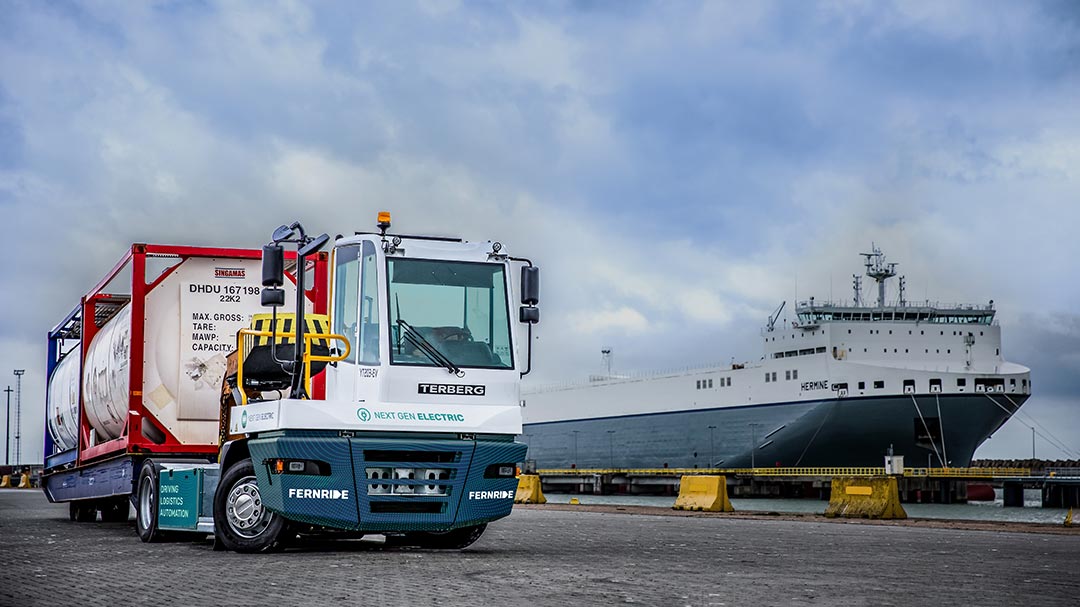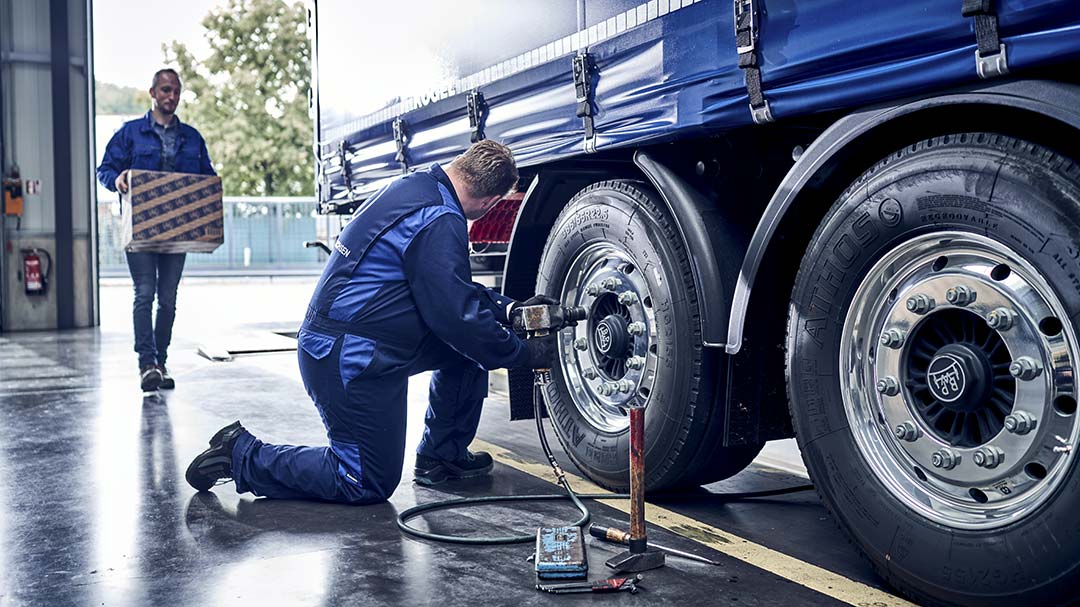Reading time approx. 5 minutes
Text: Oliver Schönfeld
Photos: Oliver Schönfeld, Universität Duisburg Essen – Lehrstuhl für ABWL & Int. Automobilmanagement
How can metropolises rescue themselves from gridlock? How can the logistics for the last mile or the last hundred metres be made more efficient and more environmentally friendly? The University of Duisburg-Essen’s eleventh Scientific Forum for Mobility came up with some exciting responses to these questions – from high-speed transport pods and underground transportation to retrofitting with electric drives.
‘Sustainable design for international mobility is going to be one of the biggest challenges for all major cities,’ says Professor Thomas Spitzley, vice-rector at the University of Duisburg-Essen. Experts agree that there is no singular solution that solves all of the logistics problems in large cities and urban areas in one go. The familiar challenges on the last mile or even just the last 100 to 200 metres require intelligent answers.
‘We need to ultimately start thinking about transport in multiple dimensions,’ believes Professor Heike Proff from the Chair of General Business Administration and International Automotive Management. ‘By using intelligent networking of various modes of transport, we can find solutions for current and future requirements.’ So-called robocopters, transport pods, electric vehicles and cargo bikes all need to be combined and well-coordinated to make logistics more efficient and more environmentally friendly in the smart city.
Conclusions such as these were reached by the participants of the Scientific Forum for Mobility 2019 at Duisburg’s CityPalais. The Chair of General Business Administration and International Automotive Management has been organising the forum annually since 2008, offering representatives from the worlds of science, business and politics a platform for in-depth discussion of research results. The theme for 2019 was ‘New Dimensions of Mobility Systems’.

»Today’s transport is an unmitigated disaster.«
Christoph Gümbel from the Swiss company Future matters AG
From a total disaster to a smart city
The experts agree that there already seems to be great potential in new mobility systems, but that intelligent transport and logistics approaches are still a long way off. Futurologist Christoph Gümbel from the Swiss company Future matters AG ventured a global outlook. He sees renewable energy usage and advancing digitisation as drivers for the international mobility of the future. His assessment of the current conditions is sobering: ‘Today’s transport is an unmitigated disaster.’ Smart mobility could change this. There do not necessarily have to be sacrifices made for people to manage without their own vehicles. Quite the opposite: with international mobility on demand and personalised services, individuals could even benefit from greater convenience and added value in future – and at the same time, less congestion and fewer emissions. But Gümbel warns: ‘We only have one chance to get this concept established with users. That means we need to be quick, environmentally friendly and, above all, successful.’
Transporting goods at the speed of sound
Innovative technologies could be the solution for many challenges. So-called holocopters could move traffic into the air, for example. By contrast, in the German district of Emsland, the HyperPodX has made high-speed transport pods a reality on the line of the old Transrapid test facility. ‘I think we could realistically have our own test track constructed in five to six years,’ says Professor Thomas Schüning from the University of Applied Sciences Emden/Leer, whose students currently still rely on test tracks in places such as California when it comes to testing their designs. He believes that the ground-based transport pods that float on magnets hold great potential for logistics in particular: ‘I can clearly envisage logistics applications being implemented for passenger transport, for example, in order to reach hubs quickly and efficiently with HyperPods,’ says Schüning. According to the expert, distances of 500 kilometres and above are ideal for this. Road-based means of transport could then be used at the hubs in order to take care of the last mile in an efficient and sustainable mix.
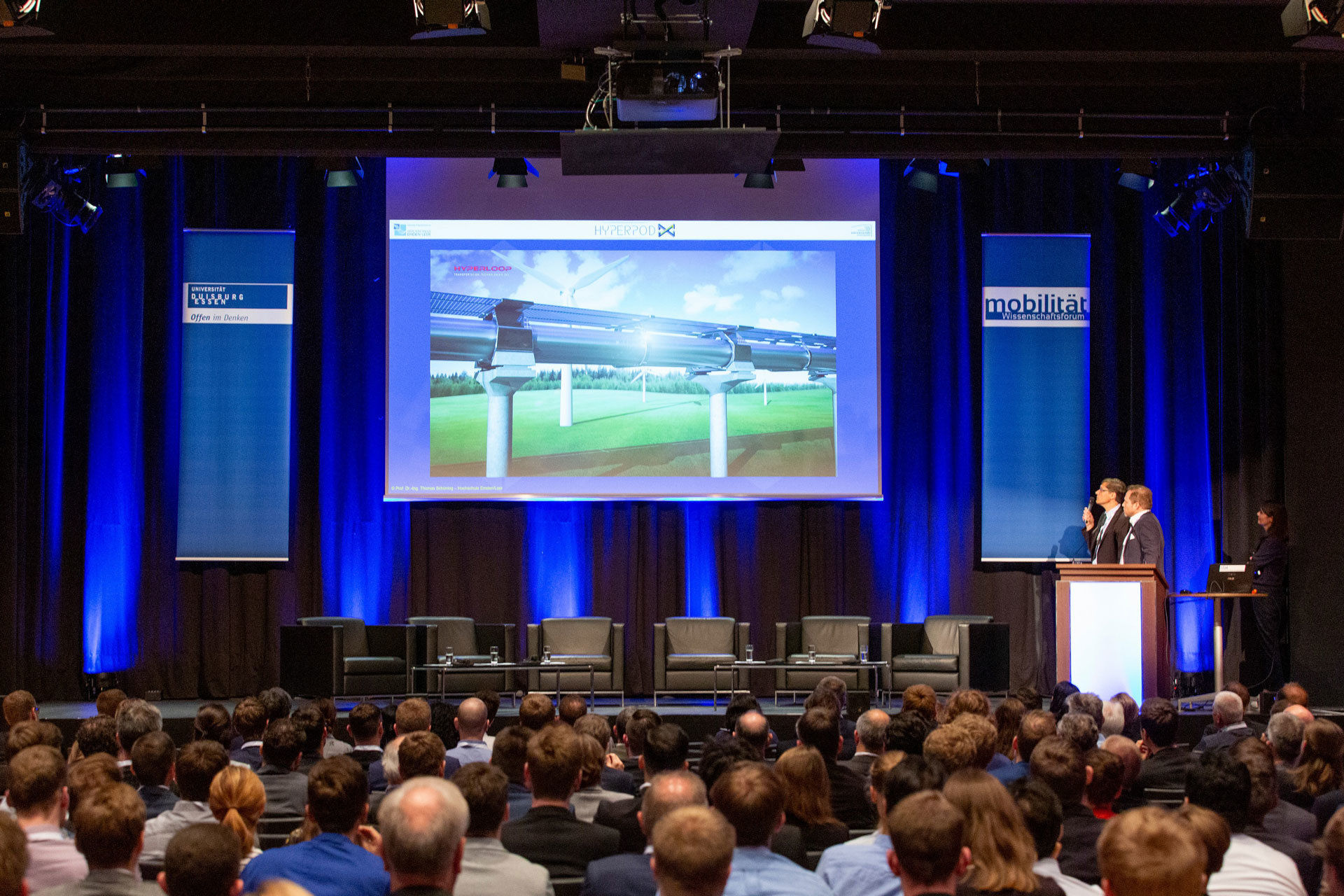
Around 350 participants from science, business and politics discussed new logistics concepts on 23 May 2019 at the University of Duisburg-Essen’s eleventh Scientific Forum for Mobility.
Tram for the last 100 metres
This last stage through to the recipient, which may be just a few hundred metres, does not necessarily have to be covered by road. Many large cities already have a dense inner-city rail network with trams that are currently only used for passenger transport. The ‘Last Mile Tram’ pilot project in Frankfurt am Main is investigating whether there could be a shift from single-stage direct delivery by CEP service providers on the last mile to a three-stage delivery concept.
‘The tram takes on parcels at certain hubs, ideally stations at the end of the line or turnarounds, covers part of the transport route and then hands over the packages to cargo bikes, handcarts or other types of transport,’ explains Dr Dominic Hofmann, head of Research for the Research Lab for Urban Transport (ReLUT) at Frankfurt University of Applied Sciences. The pilot project on a tram line in the city of Frankfurt delivered new technical insights – both in terms of the boxes for transport on the tram and regarding the cargo bikes for the final distribution stage. But before new transport concepts can be implemented, rules and regulations often have to be adapted – in this case, the Personenbeförderungsgesetz (German passenger transport act) and other regulations that currently do not permit combined transport of people and goods.
Going underground in the smart city
Another piece in the jigsaw for the city logistics of the future could be underground transport: the technical standard already available for intralogistics could be used for the automated transport of palletised goods through underground pipelines. Transport in what is known as a smart-city loop is autonomous, electric and independent of the traffic and weather conditions above ground. The first trials in major cities are apparently not far off. In Hamburg, for example, a feasibility study is currently under way and is due for completion in autumn 2019. This is investigating the possibilities of an underground connection from an outlying warehouse location to an inner-city distribution centre. The aim is to transport up to 3,000 pallets per day into the city and take around 2,000 pallets back out – thus relieving the pressure on the chronically crowded roads.
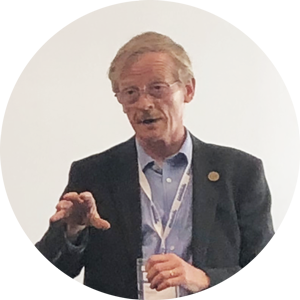
»Sustainable logistics is not easy to implement – but it is possible.«
Peter Harris, director of Sustainability, UPS Europe
Sustainability in logistics: don’t just talk about it – do something about it.
Environmentally friendly logistics in the city – is that a contradiction in itself? Peter Harris, director of Sustainability at UPS Europe, is convinced that ‘Sustainable logistics is not easy to implement, but it is possible.’ He believes that we also need to look at all aspects of the transport process, right through to packaging. UPS, for example, helps customers to design space-saving packaging with PackPerfect. When the volume is reduced in this way, more packages can be put into each vehicle and this also means fewer emissions per parcel. When it comes to drive technology too, a lot is possible already, says Harris: older vehicles could be converted to an electric drive and a gradual change to bicycle logistics is a possibility in cities. UPS is also using a new Electric-vehicle model in Cologne city centre, for example: the conventional 7.5-ton delivery vehicle has been converted and its power now comes from eTransport, an electric drive system developed by BPW, instead of a diesel engine. According to Harris, another challenge lies in powering the electric vehicles in the logistics depots: smart grid solutions and companies building their own energy storage with discarded electric vehicle batteries could also be important components in increasing efficiency, reducing operational costs and at the same time solving current infrastructure problems.
The push for greater sustainability is also coming from the cities themselves: the city of Hamm, for example, has committed to reducing the amount of traffic on its streets and is also so far the only city in North Rhine-Westphalia to set concrete upper limits for traffic on all major roads. The concept, which was developed as part of the ICEM (IntraCity E-Mobility) project, will shortly be entering practical testing. The central issue concerns the separation of trans-regional transport and regional distribution. The SRH University Hamm has developed the concept for a compact cross-docking centre for this purpose. Instead of the central regional hubs that are currently standard, this concept envisages smaller trans-shipment centres in decentralised locations. This means shorter delivery routes into the city or residential areas – and thus enables environmentally friendly carriage on the last half mile with electric vehicles or even cargo bikes.

